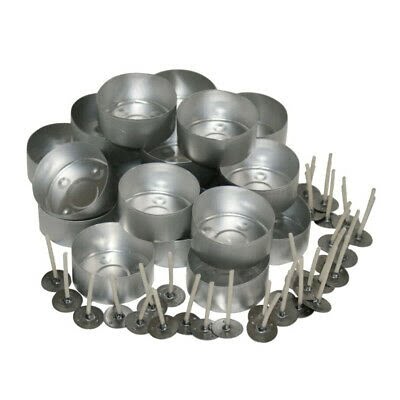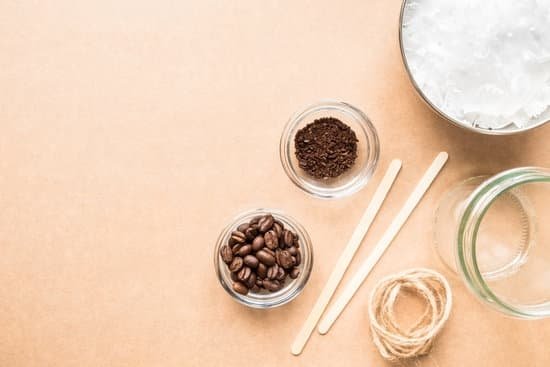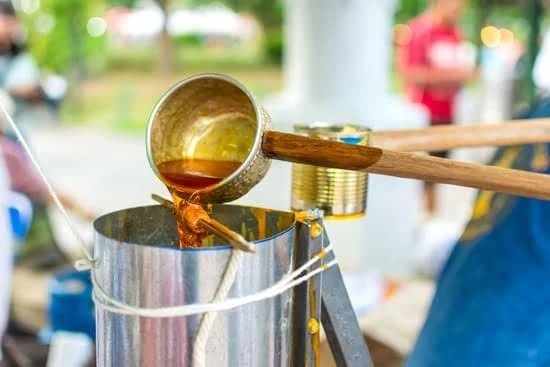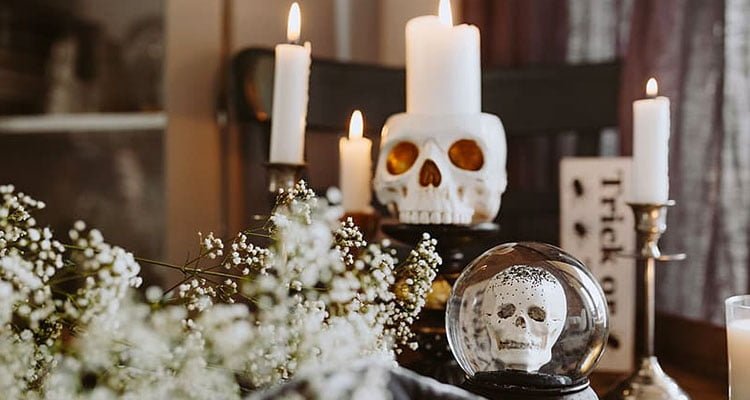Can you add essential oils when making candles to create a beautifully scented and customized product? With the growing trend of homemade candles, more people are discovering the joys of crafting their own unique candles at home.
The addition of essential oils not only enhances the fragrance but also offers various therapeutic benefits through aromatherapy. In this article, we will explore the basics of making candles, the role of essential oils in candle making, safety precautions, methods of adding essential oils, and tips for experimenting with different blends.
As more individuals seek natural and sustainable alternatives to store-bought products, the art of making homemade candles has gained popularity. Not only does it allow for creative expression, but it also provides a sense of satisfaction in creating something by hand.
One key aspect that enhances the appeal of homemade candles is the ability to add essential oils for fragrance. Essential oils offer a wide range of scents and therapeutic properties that contribute to a delightful sensory experience when burning the candle.
In this article, we will delve into the world of candle making and explore how adding essential oils can elevate the overall experience. From understanding the basics of candle making to identifying the best essential oils for candles and ensuring proper safety measures, we aim to provide an insightful guide for those interested in embarking on this aromatic journey.
Whether you are new to candle making or a seasoned crafter, incorporating essential oils can transform your creations into personalized works of art that not only look beautiful but also smell divine.
The Basics of Making Candles
When it comes to making candles, there are several key components to consider in order to create a quality product. The type of wax used is one of the most important factors to take into account. There are various options available, including paraffin wax, soy wax, beeswax, and palm wax. Each type of wax has its own unique qualities and characteristics, so it’s important to choose the one that best suits your preferences and needs.
In addition to the type of wax, the choice of wick also plays a crucial role in candle making. Wicks come in different sizes and materials, such as cotton or wood, and selecting the right one can affect how the candle burns and how long it lasts. It’s essential to consider the size and diameter of the container when choosing a wick, as this will impact the overall performance of the candle.
Furthermore, the selection of containers for candle making is another aspect that should not be overlooked. Glass jars, metal tins, ceramic vessels – there are numerous options available for containing candles. The choice of container can influence the aesthetic appeal of the finished product as well as its safety during use.
Ultimately, understanding the basics of making candles means taking into account all these elements – from selecting the appropriate wax and wick to choosing suitable containers. By mastering these fundamental aspects of candle making, individuals can create beautiful and high-quality candles that are both visually appealing and functional.
Experimenting With Different Wax Types
When embarking on your candle-making journey, it can be beneficial to experiment with different types of wax to determine which one best suits your preferences and needs. Whether you prefer a clean-burning option like soy wax or a natural alternative like beeswax, each type offers its own advantages when it comes to producing homemade candles.
Finding the Right Wick Size
Selecting the right wick size is essential for ensuring that your candles burn evenly and efficiently. It’s crucial to match the size and material of the wick with your chosen wax in order to achieve optimal burning performance. Experimenting with different wick sizes can help you determine which one works best for your specific candle-making project.
Choosing Suitable Containers
The choice of container for your homemade candles can greatly impact their appearance and functionality. Consider factors such as heat resistance, transparency, and aesthetic appeal when selecting containers for your candles. By experimenting with different types of containers, you can find one that complements your personal style while also ensuring safe usage.
The Role of Essential Oils
Essential oils play a crucial role in candle making as they are responsible for providing fragrance and therapeutic benefits to the candles. When making homemade candles, adding essential oils can elevate the overall experience by creating a pleasant aroma and promoting relaxation through aromatherapy. These natural oils extracted from plants have gained popularity for their various benefits, making them a desirable choice for candle enthusiasts looking to customize their creations with unique scents.
One of the main advantages of using essential oils in candles is the ability to enjoy natural scents without exposure to synthetic fragrances that can be found in commercial candles. For individuals who are sensitive to artificial additives or have environmental concerns, using essential oils offers a more sustainable and non-toxic alternative. Additionally, the use of essential oils in candles can also provide therapeutic effects, such as promoting relaxation, reducing stress, and improving mood due to their aromatic properties.
When it comes to selecting which essential oils to use in candle making, there is a wide range of options available based on personal preferences and desired effects. Popular choices include lavender for its calming properties, eucalyptus for its refreshing scent, and citrus oils for their uplifting and energizing qualities.
Each essential oil brings its own unique characteristics that can enhance the ambiance of a room when infused into candles, allowing individuals to create personalized blends that cater to specific needs or moods.
| Benefits of Using Essential Oils in Candles | Examples of Popular Essential Oils |
|---|---|
| Natural scents without exposure to synthetic fragrances | Lavender |
| Promotion of relaxation and stress reduction | Eucalyptus |
| Aromatherapy benefits for improved mood | Citrus oils (e.g. orange or lemon) |
Best Essential Oils for Candles
When making homemade candles, adding essential oils can enhance the overall experience by providing a natural and pleasant fragrance. Essential oils are derived from plants and flowers, containing unique properties that can create different moods and evoke various emotions. Here are some popular essential oils that are commonly used in candle making:
- Lavender: Known for its calming and relaxing properties, lavender essential oil is a popular choice for candles intended for promoting stress relief and better sleep.
- Peppermint: With its invigorating and refreshing scent, peppermint essential oil is often used in candles designed to boost energy and mental clarity.
- Lemon: Recognized for its uplifting and cleansing effects, lemon essential oil is perfect for creating an energizing and revitalizing atmosphere in any space.
In addition to these well-known essential oils, others like eucalyptus, bergamot, and cedarwood can also add their own unique benefits to homemade candles. Whether you’re seeking relaxation, rejuvenation, or focus, there’s an essential oil to suit your needs when making candles.
It’s important to note that when incorporating essential oils into candle making, proper safety precautions must be taken. Always measure the amount of essential oil carefully to avoid overpowering scents or potential hazards like flammable conditions.
Additionally, it’s crucial to research the safe usage levels of each essential oil as some may require less quantity due to their strong potency. By following these guidelines, you can enjoy the benefits of using essential oils in candle making while ensuring a safe environment.
Safety Precautions
When it comes to making candles with essential oils, safety should always be a top priority. Improperly measuring or adding essential oils can lead to potential hazards, so it’s crucial to take the necessary precautions.
One of the main risks associated with essential oil-infused candles is the possibility of the oil igniting when coming into contact with the candle flame. To prevent this from happening, it’s important to carefully measure and add the essential oils following recommended guidelines.
Another safety concern when incorporating essential oils into candles is the risk of skin irritation or allergic reactions. Certain essential oils can be irritating to the skin, especially when used in high concentrations. Therefore, it’s essential to be mindful of the amount of essential oil being added to the candle wax. Additionally, if someone has a known sensitivity or allergy to a particular essential oil, it’s best to avoid using that oil altogether.
Proper ventilation is also an important safety consideration when working with essential oils for candle making. Some essential oils emit strong aromas that can be overwhelming in confined spaces, which can cause headaches or respiratory issues for some individuals. Working in a well-ventilated area can help minimize these risks and ensure a safe environment for creating scented candles.
| Safety Concerns | Precautions |
|---|---|
| Potential hazards from igniting oil | Carefully measure and follow guidelines for adding essential oils |
| Risk of skin irritation or allergic reactions | Be mindful of concentrations and avoid using oils that may cause sensitivities |
| Proper Ventilation | Work in a well-ventilated area to minimize overwhelming aromas |
Methods of Adding Essential Oils
When it comes to adding essential oils to candles, there are various methods for incorporating these aromatic oils into your homemade creations. Whether you prefer a strong, direct fragrance or a more subtle blend of scents, the method you choose can greatly impact the outcome of your candle. Here are some different techniques for adding essential oils to your candles.
Direct Addition
One common method for incorporating essential oils into candles is through direct addition. This involves adding the essential oils directly to the melted wax before pouring it into the container. The amount of essential oil added will depend on the type of wax being used and the desired strength of fragrance. Direct addition allows for a more potent scent that is released as the candle burns.
Blending
Another popular technique for adding essential oils to candles is through blending. This involves mixing different essential oils together to create a custom fragrance blend. By combining various essential oils, you can create unique scents that cater to your preferences. Blending also allows for more control over the intensity and complexity of the fragrance in your candle. Additionally, experimenting with different combinations can lead to discovering new and delightful aromas.
Avoid Overloading
Regardless of the method chosen, it’s crucial to avoid overloading your candles with essential oils. Adding too much oil not only affects the quality of the burn but can also pose safety hazards such as flaring or smoking. Properly measuring and following guidelines for each type of wax and oil is critical in achieving an optimal balance between scent and safety when making scented candles at home.
Experimenting With Essential Oil Blends
When it comes to making homemade candles, one of the most exciting aspects is experimenting with different essential oil blends to create custom fragrances. Essential oils not only add a pleasant aroma to candles but also offer potential aromatherapy benefits. Here are some tips for creating unique fragrance blends using multiple essential oils:
- Start with a Base: Begin by selecting a base note essential oil, such as cedarwood or sandalwood, which provides a solid foundation for the fragrance blend.
- Add Middle Notes: Incorporate middle note essential oils, such as lavender or rosemary, to enhance the complexity and balance of the fragrance.
- Finish with Top Notes: Finish the blend with top note essential oils, such as citrus or peppermint, to provide a refreshing and invigorating aroma.
The key to creating successful custom fragrance blends is experimentation. Start by blending small amounts of each essential oil and testing the combination before committing to a larger batch. Keep track of the ratios used in each blend so that you can adjust them based on your preferences.
Safety Precautions
When experimenting with essential oil blends for candles, it is important to be mindful of safety precautions. Always measure the essential oils accurately and avoid exceeding recommended concentrations. Some essential oils can be irritating or even harmful if used in high quantities.
In addition to creating custom fragrance blends using multiple essential oils, consider exploring complementary scents that evoke specific moods or memories. Whether you’re aiming for relaxation, energy, or nostalgia, there are endless possibilities for crafting unique and personal candle fragrances using essential oils.
Conclusion
In conclusion, the art of making homemade candles with essential oils is an enjoyable and rewarding hobby that allows individuals to create custom scents for their living spaces. The benefits of adding essential oils to candles go beyond just fragrance, as they also offer therapeutic properties that can enhance mood and promote relaxation through aromatherapy.
By understanding the basics of candle making and the role of essential oils, enthusiasts can safely experiment with different blends to create unique and personalized scents.
When it comes to choosing essential oils for candles, there are a variety of popular options with distinct properties that cater to different preferences. From soothing lavender to invigorating citrus blends, there is no shortage of possibilities for creating delightful fragrances. However, it is crucial to follow safety precautions and proper measurement techniques when adding essential oils to avoid potential hazards and ensure a safe candle-making process.
As individuals delve into the world of candle making with essential oils, they have the opportunity to explore their creativity by experimenting with various blends and techniques. Whether it’s creating custom fragrance combinations or learning different methods for incorporating essential oils into candles, this hobby offers endless possibilities for expression.
Ultimately, making candles with essential oils offers a creative outlet that not only fills homes with delightful scents but also provides a sense of accomplishment in crafting one’s own aromatic ambiance.
Frequently Asked Questions
Can I Add Essential Oils to My Candle?
Yes, you can add essential oils to your candles. Essential oils are a popular choice for adding fragrance to candles because they come in a wide variety of scents and can offer natural aromatherapy benefits.
Are Essential Oils Better for Candle Making?
Some candle makers believe that essential oils are better for making candles because they are natural, plant-derived substances, as opposed to synthetic fragrances. However, it ultimately depends on personal preference and the desired scent strength and longevity.
How Do You Make Homemade Candles Smell Stronger?
There are several ways to make homemade candles smell stronger. One method is to use a higher concentration of fragrance oils or essential oils when making the candle.
Another option is to let the candle cure for a longer period before burning it, which allows the scent to fully infuse into the wax. Additionally, choosing the right type of wax and using proper wick size can also help enhance the fragrance throw of homemade candles.

Welcome to my candle making blog! In this blog, I will be sharing my tips and tricks for making candles. I will also be sharing some of my favorite recipes.





